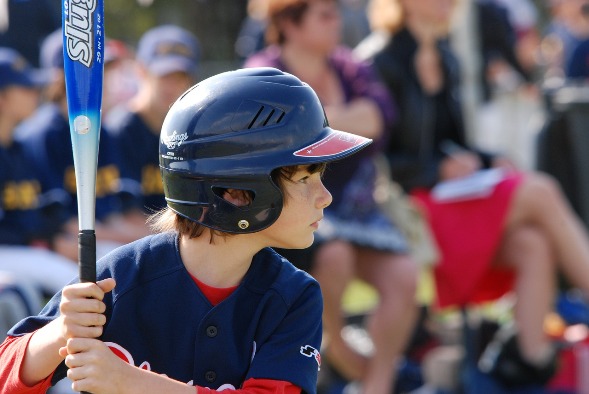Visits: 0
Your child has just been handed their very first Little League uniform. The hand-stitched numbering and letters put a smile on their face. To them, the uniform represents a model of excitement and adventure. They are aware that it is only worn on special occasions; game day. As a parent, you are proud of your child’s choice, as you know the life lessons that can be learned from a team sport. The sport of baseball represents a key learning model for children and parents alike. Raising your child on baseball can be handled in different fashions, with some directions representing a positive path and others representing a wrong turn. The parent is left to raise this child on the sport that represents America’s pastime.
Starting Points: Gaining Traction
The first step to raising your child on baseball is to turn them loose. Let them experience the highs and the lows of the game first-hand. Their coaches are well trained in this profession and the advice they provide will greatly exceed any in-game pointers a parent can provide. The in-game session is also a primary learning device for children. They get to observe the actions of others and often can learn from such behaviors. The interactions that occur between teammates are things that cannot be forced or bought. Let them go to start out. Have them experience their first couple of games before jumping into the discussion. This length of time often represents an opportunity for the child to voice their concerns, good and bad.
A Few Games Under Their Belts
After the successful completion of their first few contests, children will either show an interest or a disproval of the sport. The interested bunch will ask for pointers, tips, and seek additional help from the parent. Your job is to answer these questions to the best of your ability. The best way to showcase your answers is through action. Walk the children through some of the important steps of the game. Their little minds can only retain so much information, so do not be too technical with your terminology. Start out basic with batting grips, throwing motions, and glove positioning. You teach them these 3 factors to gauge the retention rate. Let them take this information and practice it on their own. Than you build upon the information and let the learning process flourish.
The individuals who have become disinterested after the first few games are harder to coax. The number one contributor to this mood or behavior is the notion of a loss. Kids never like to lose, but it is a part of the sport that they must learn, as no one is perfect. The parent’s responsibility is to coax these losses. Take them out to pizza and have them highlight their favorite parts of the gain. Having them state multiple options will help outweigh the sting of the loss. Take them to a professional game and tell them about the length of the Major League season. There are 162 games that these professionals participate in, and no team has ever come close to winning them all. Having them observe “the big guys” lose and face adversity will help them understand that it is alright to lose a game. These two activities can help rediscover that interest they had when receiving their very first uniform.
Let Them Grow with the Sport
Using hands-on interaction is fine in the early stages of their career. Young and inquiring minds will continuously ask questions and seek advice. As these children age, they will grow more independent with the sport. They will rely on their teammates and coaches for advice. This is where you have to let them grow. Interrupting this process by pointing out flaws and voice concerns will only anger or upset the growing child. Go to the games, cheer them on, but leave the playing up to them. They will voice their opinions if they need help. As they grow, try to let them practice on a more individual basis. If they ask for advice, provide it with a promotion of individual effort going forward. For example, if they need to work on the mechanics of their swing, show them the correct fashion multiple times. These mechanics cannot be bought and this action requires the formation of muscle memory. After walking them through it a few times, suggest that they practice this action on their own.
Promote Self-Sacrifice
Most little league teams rely on generous sponsorship for them to function. When they companies set aside funds for these teams, they often gain recognition on some portion of the team’s uniform. It is a small marketing tool that is generally down to support the sporting community. Promote the child’s knowledge of what it means to give back to the community. Reserving parks, hiring umpires, and creating tournaments often involve a lot of community cooperation and money to support. Work with the team to promote fundraising ideas, banquets, and other such efforts to show your children the value of money. They can learn to help support their team or support their community in the process. This is often a practice that is rarely carried out, so highlighting the importance of giving back can help your child’s maturation process in sport and life alike.




You must be logged in to post a comment Login